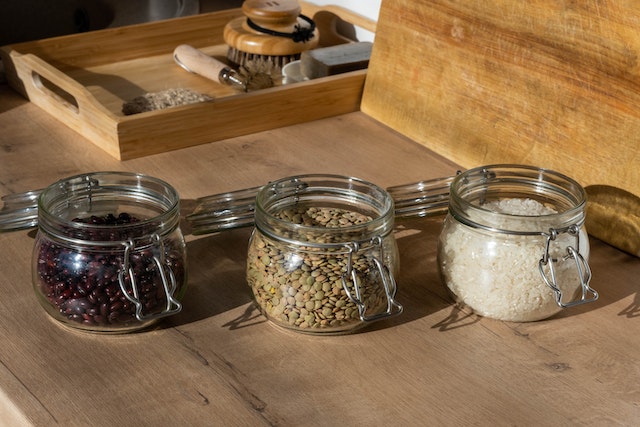Whole grains are a nutritional powerhouse, yet they often play second fiddle to their refined counterparts. In a world dominated by white rice and white bread, whole grains deserve a place of honor in our pantries and on our plates. They offer a wealth of health benefits and add variety and texture to our meals. In this article, we will introduce you to the world of whole grains, their health benefits, and how to make them a part of your daily diet.
The Whole Grain Difference
Before we delve into specific whole grains, let’s understand what sets them apart from refined grains. Whole grains consist of three main parts: the bran, the germ, and the endosperm. These parts contain essential nutrients, including fiber, vitamins, minerals, and antioxidants. In contrast, refined grains, such as white rice and white flour, have the bran and germ removed, leaving only the starchy endosperm. This process removes many of the nutrients, making refined grains less nutritious.
The Health Benefits of Whole Grains
Whole grains offer a host of health benefits that make them a valuable addition to your diet:
- High in Fiber: The fiber in whole grains supports digestion, keeps you feeling full, and helps maintain stable blood sugar levels.
- Nutrient-Rich: Whole grains are packed with essential nutrients like B vitamins, iron, magnesium, and selenium.
- Heart Health: Regular consumption of whole grains is associated with a reduced risk of heart disease, thanks to their ability to lower cholesterol levels and blood pressure.
- Weight Management: The fiber in whole grains contributes to weight management by promoting a sense of fullness.
- Digestive Health: Whole grains support a healthy gut by promoting regular bowel movements.
- Reduced Risk of Chronic Diseases: Whole grains are linked to a reduced risk of type 2 diabetes, certain cancers, and stroke.
Now that you know why whole grains are worth your attention, let’s explore some nutritious options for your pantry.

1. Quinoa
Nutrition Highlights: Quinoa is a complete protein, providing all nine essential amino acids. It’s also a good source of fiber, iron, magnesium, and manganese.
How to Use: Use quinoa as a base for salads, in pilafs, or as a nutritious side dish.
2. Brown Rice
Nutrition Highlights: Brown rice is high in fiber, vitamins, and minerals, including B vitamins, magnesium, and phosphorus.
How to Use: Substitute brown rice for white rice in your favorite dishes, from stir-fries to rice bowls.
3. Whole Wheat
Nutrition Highlights: Whole wheat contains more fiber and nutrients than white flour, making it a healthier choice for baking and cooking.
How to Use: Use whole wheat flour for baking, or choose whole wheat pasta and bread.
4. Oats
Nutrition Highlights: Oats are a rich source of soluble fiber, which is beneficial for heart health. They also provide vitamins and minerals, including manganese and phosphorus.
How to Use: Start your day with a bowl of oatmeal, use oats in baking, or make homemade granola.
5. Barley
Nutrition Highlights: Barley is a good source of fiber, particularly beta-glucans, which support heart health. It also provides selenium and manganese.
How to Use: Cook barley and add it to soups and stews or use it as a base for grain bowls.
6. Bulgur
Nutrition Highlights: Bulgur is high in fiber and provides vitamins and minerals, including B vitamins and manganese.
How to Use: Make tabbouleh, a Middle Eastern salad, or use it in pilafs.
7. Millet
Nutrition Highlights: Millet is gluten-free and a good source of protein, fiber, and essential minerals like magnesium and phosphorus.
How to Use: Cook millet as a side dish or use it as a base for a grain salad.
8. Farro
Nutrition Highlights: Farro is high in fiber and provides protein, vitamins, and minerals, including B vitamins and magnesium.
How to Use: Cook farro and use it in soups, salads, or as a side dish.
Incorporating Whole Grains into Your Diet
Making whole grains a regular part of your diet is easier than you might think. Here are some tips for incorporating them into your meals:
- Start with Small Changes: If you’re used to white rice, try mixing it with brown rice or quinoa. Gradually increase the proportion of whole grains.
- Explore Different Varieties: There is a wide variety of whole grains available, each with its own unique flavor and texture. Experiment with different types to discover your favorites.
- Use Whole Grain Flour: When baking, replace white flour with whole wheat or whole grain flours for added nutrition.
- Combine with Vegetables: Create grain-based salads with a variety of vegetables, herbs, and a flavorful dressing.
- Incorporate into Breakfast: Add oats to your morning routine with oatmeal, overnight oats, or oat-based smoothies.
- Read Labels: When buying bread, pasta, or cereal, check the ingredient list to ensure it contains whole grains.

Photo by Ron Lach : https://www.pexels.com/photo/clear-glass-jars-with-raw-beans-seeds-and-rice-on-brown-wooden-table-8287244/
Conclusion
Whole grains are not just pantry staples; they are nutritional powerhouses that offer a host of health benefits. By making a conscious effort to include whole grains in your diet, you can improve your overall well-being, support your digestive health, and reduce the risk of chronic diseases. From quinoa to oats and barley to farro, there is a whole world of whole grains waiting for you to explore. So, next time you’re at the grocery store, make sure to stock up on these nutritious pantry staples and give your meals a healthy and flavorful boost.











